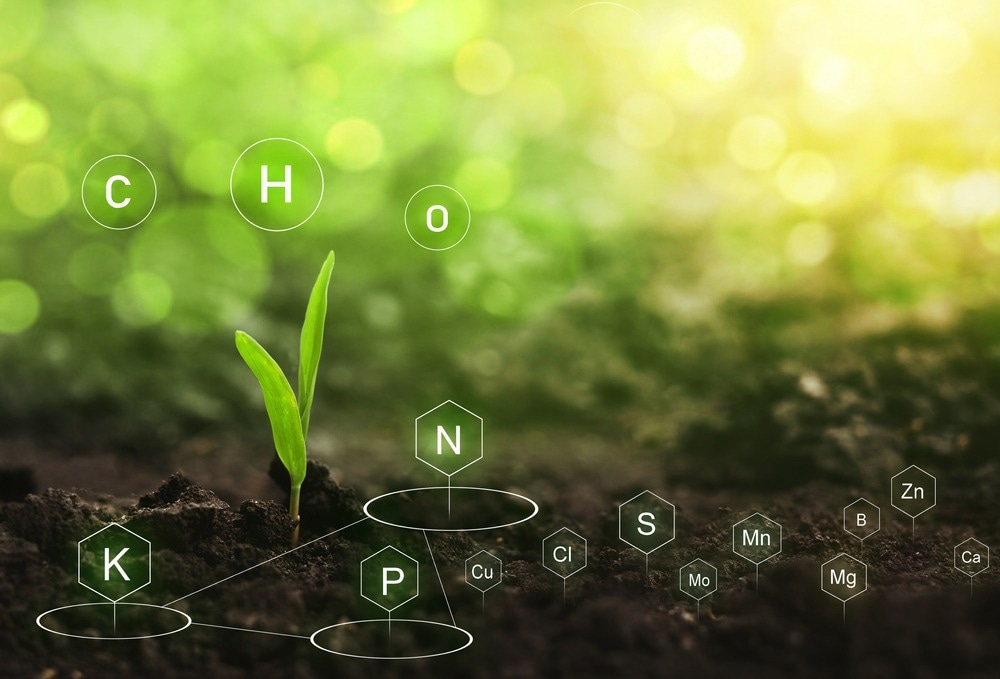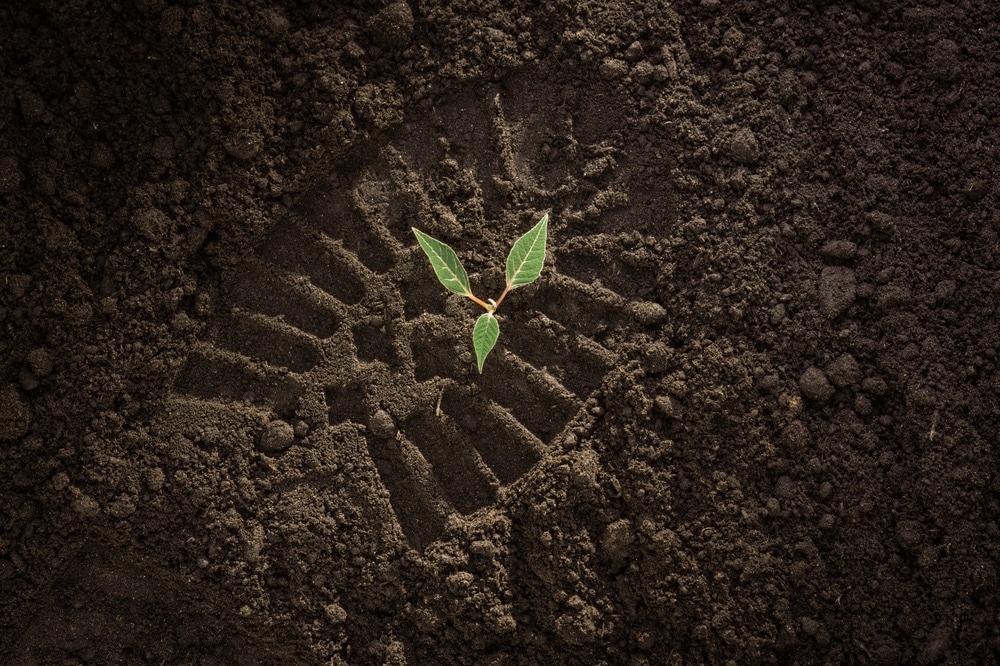The field of soil science is undergoing rapid changes thanks to emerging molecular and computational technologies. However, progress is lacking, particularly when considering the conservation and sustainability of soils. Nonetheless, the future of soil science is promising, as companies and organizations are integrating knowledge of soil science and translating it into key innovations.

Image Credit: Miha Creative/Shutterstock.com
Challenges of soil science in a rapidly changing world
Humanity faces considerable challenges, including climate change, water scarcity, biodiversity decline, and the pressures of feeding 10 billion people by 2050. The latter relies extensively on agricultural production, which depends on conditions such as soil health. As a result, soil systems are at the core of agricultural activity as well as ensuring the sustainability of human development.
The study of soil systems, the species they encompass, and their connections to other systems have grown in significance due to the socioeconomic and ecological challenges that have emerged in recent decades. However, empirical evidence suggests that not all soils can deliver the necessary ecosystem services to address human needs, exacerbated by the decline in soil health from human activity itself. Despite its importance, soil science remains on the sidelines when developing and integrating policies concerning agriculture and ecology, particularly regarding the Sustainable Development Goals (SDGs).
This was further discussed in a 2019 study by Bouma et al., who described how “soil scientists only marginally participated in the SDG discussions and are currently only peripherally engaged in discussions on targets or indicators.” Such limited activity has led to slow progress in developing soil-related environmental indicators as well as infrequent connections to other fields of research and scientific disciplines. In response to the limited progress of soil science, recent studies have advocated for rapid and extensive changes to soil science.
For instance, a 2020 study by Rodrigo-Comino et al. highlights several areas of soil science that could accelerate innovative progress and strengthen connections with other disciplines. Specifically, authors emphasize the need to pay more attention to (1) effective soil conservation strategies; (2) new computational technologies; (3) impacts of human activities, wildfires, and climate change on soil microorganisms; (4) microplastics as a new potential pollutant; (5) the development of green technologies for soil rehabilitation; and (6) the reduction of greenhouse gas emissions by simultaneous soil carbon sequestration and reduction in nitrous oxide emission. Altogether, these changes would provide rapid development to the field of soil science and accelerate progress towards SDGs and other goals.
The emerging opportunities for conservation in soil science
The emergence of new interdisciplinary concepts as well as emerging technologies, may provide the foundations for a revolution in soil science. The field may therefore be undergoing rapid shifts in understanding by incorporating new concepts and methods.
For instance, awareness of the value of conservation has increased rapidly over recent decades, particularly in recent years since the development of the SDGs. Conservation practices have become paramount in the face of climate change and stretch across scientific disciplines from conservation genetics to automated ecosystem management tools. Soil science is at the crossroads of many disciplines, and therefore plays a pivotal role in accelerating the progress in understanding various conservation areas in terrestrial systems.
This was the focus of a 2019 study by Dubey et al., who considered the role of microbial conservation in soil systems to preserve ecosystem functions, increase tolerance to abiotic and biotic stressors, and increase productivity. The authors review the critical roles of soil microbial taxa in relation to global climate changes due to their roles in biogeochemical cycling, plant growth, and carbon sequestration. The review highlights the genomic approaches that show potential for the identification of uncultivated diversity and finding shifts in the bacterial community associated with sensitive and disease-tolerant plants, and understanding how microbes are affected by climate change.
Combining genomic approaches targeting microbial taxa and surface conservation practices for soil systems would ameliorate plant–microbe interactions. As a result, the authors emphasize that such strategies may enhance the tolerance of soil taxa in natural systems and improve agricultural sustainability practices in exploited areas, providing key benefits to soil systems.
To date, many companies and institutions have tried to improve soil systems' sustainability in exploited areas. One such organization is the Sustainable Soils Alliance, operating in the UK. The alliance represents a strategic partnership of farming organizations, businesses, NGOs, applied science, and academia working together to restore soil health.
Interdisciplinary efforts are further supported by commercial companies, which provide key solutions to issues of soil health that can vary from fine to broad spatial and temporal scales. For instance, the SuregroundTM soil enhancement system developed by Soil Science Ltd. provides an alternative to the traditional compound and haul method of construction and typically works on projects from roads to large-scale facilities while incorporating an understanding of soil health within their infrastructure.

Image Credit: Leka Sergeeva/Shutterstock.com
Considerations for the revolution of soil science
Other opportunities are rapidly emerging for soil science, including integrating automated technologies. This was further discussed in a 2018 study by Pereira et al. 2018, who presented the range of benefits provided by machine learning across soil science indicators. From identifying susceptible soil systems to analyzing microbial taxa, machine learning has broad applications that remain to be tested.
Such innovations would boost the innovations within soil science and provide key tools to manage soil systems effectively. This is particularly significant with the growing pressures of food demand and climate change. Such challenges are of ecological and socioeconomic concern but also represent opportunities for soil science to expand in understanding as knowledge of soil systems can be applied to address issues of food demand as well as biotic and abiotic stressors.
The future progress of soil science, as discussed in the study by Rodrigo-Comino et al., therefore relies on integrating knowledge from different disciplines, using emerging technologies, and considering human impacts. Examining these aspects will be key to driving innovation in soil science in the coming decades and will play a critical role in our understanding of ecological and agricultural systems amid the revolutionizing of soil science.
Sources:
- Bouma, J., Montanarella, L., & Evanylo, G. (2019). The challenge for the soil science community to contribute to the implementation of the UN Sustainable Development Goals. Soil Use and Management, 35(4), 538–546. https://doi.org/10.1111/sum.12518
- Dubey, A., Malla, M. A., Khan, F., Chowdhary, K., Yadav, S., Kumar, A., Sharma, S., Khare, P. K., & Khan, M. L. (2019). Soil microbiome: a key player for conservation of soil health under changing climate. Biodiversity and Conservation, 28(8–9), 2405–2429. https://doi.org/10.1007/s10531-019-01760-5
- Pereira, P., Bogunovic, I., Muñoz-Rojas, M., & Brevik, E. C. (2018). Soil ecosystem services, sustainability, valuation and management. Current Opinion in Environmental Science & Health, 5, 7–13. https://doi.org/10.1016/j.coesh.2017.12.003
- Soil Science Ltd | Reversible Soil Enhancement System. (2022, March 31). Soil Science. Retrieved 2022, from https://soilscienceltd.com/
- Sustainable Soils | Working together to restore our soils. Sustainable Soils Alliance. https://www.sustainablesoils.org/
- Vera, J., Conejero, W., Mira-García, A. B., Conesa, M. R., & Ruiz-Sánchez, M. C. (2021). Towards irrigation automation based on dielectric soil sensors. The Journal of Horticultural Science and Biotechnology, 96(6), 696–707. https://doi.org/10.1080/14620316.2021.1906761
Further Reading
Last Updated: May 17, 2023